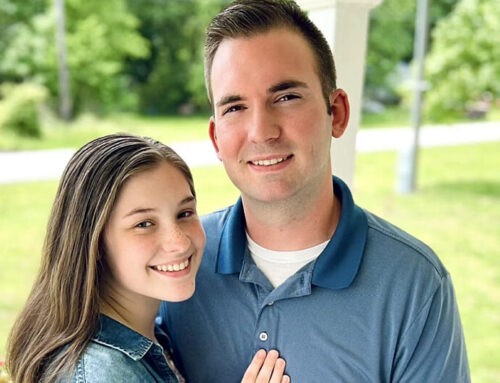By Dennis Romero
August 7, 2021
-NBC
SAN DIEGO — Sheriff’s body camera video of a deputy apparently passing out after a superior cautioned him that the drugs he had seized were “super dangerous” went viral with national news coverage Friday, but not before some experts expressed doubts about the scenario.
The San Diego County Sheriff’s Department released body camera video of the July 3 incident Thursday, more than a month after the seizure of what deputies said was confirmed to be synthetic opioid fentanyl, a drug that has defied border barriers and boosted annual overdose deaths here by 200 percent last year.
The department billed the video as a cautionary tale about just how potent fentanyl, known for inspiring hazmat responses to suspected drug houses, can be.
“My trainee was exposed to fentanyl and nearly died,” Cpl. Scott Crane said in the video.
While the sheriff’s department stands by the video as an archive of what one of the world’s deadliest street drugs can do just by being in its presence, some experts see it as an improbable, if not impossible, incident.
They point to research that has yet to validate law enforcement claims that just being near the drug, or touching it, can lead to overdoses.
“We have a lot of scientific evidence and a good knowledge of chemical laws and the way that these drugs work that says this is impossible,” said Ryan Marino, medical director for toxicology and addiction at University Hospitals in Cleveland.
“You can’t just touch fentanyl and overdose,” he said. “It doesn’t just get into the air and make people overdose.”
Academics at University of California, San Diego and North Carolina’s nonprofit RTI (Research Triangle International) published a paper in June in the peer-reviewed International Journal of Drug Policy that concluded there are no confirmed touch-based cases of first responder fentanyl overdoses, even when naloxone was used to revive them.
Citing similar conclusions on skin contact from the American College of Medical Toxicology and the American Academy of Clinical Toxicology, the International Journal of Drug Policy paper also suggested that panic attacks were at work, and that hyperbolic information about fentanyl didn’t help.
The researchers at UC San Diego and RTI blamed social media and the U.S. government for “dubious information about fentanyl risks.”
Regarding airborne fentanyl, researchers have said it would take a lot of it, and a longtime in its presence, to cause an overdose.
Tara Stamos-Buesig, executive director of the Harm Reduction Coalition of San Diego, says she’s faced potential fentanyl exposure nearly everyday when she hands out clean needles to addicts in a bid to prevent the kind of Hepatitis A nightmare among local homeless that sparked a statewide emergency in 2017.
“I haven’t had a response” to being near the drug, she said.
The peer-reviewed Journal of Emergency Medical Services has suggested “growing hysteria” about fentanyl for the adverse first responder responses and said “victims complain of a variety of nonspecific symptoms including dizziness, anxiety, fatigue, dyspnea, nausea, vomiting and syncope.”
Deputy David Faiivae, who was standing at the rear of a patrol SUV processing the drugs allegedly found in a nearby Jeep, said on the video: “I remember not feeling right, and then I fell back. I don’t remember anything after that.”
A sheriff’s department spokeswoman said the deputy was out of the country and unavailable for interviews.
Crane had just told him: “That stuff’s no joke dude. It’s super dangerous.”
Sheila P. Vakharia, deputy director of research and academic engagement at the Drug Policy Alliance, said by email that the video contributes to “opioid phobia” and the most egregious aspects of the unsuccessful war on drugs.
She said three out of four people charged in fentanyl cases are Black and Latino and that they face longer sentences than those targeted for other drugs.
The video “strengthens public support for more drug enforcement because these drugs are viewed as so lethal that we must get them off the streets at any cost,” Vakharia said. “It grows public support for harsher penalties for these substances and for people who sell them, doubling down on the failed drug war tactics of the past.”
She, like Stamos-Buesig, said Faiivae’s reaction to the drug didn’t look anything like opioid overdoses they’ve seen. “It is clear that the trainee was so afraid and nervous that he likely had an extreme anxiety response to whatever he was handling,” Vakharia said.
Others say cops collapsing at the scene of drug busts could dissuade other first responders from giving needed care, and it could make those reaching for 911 when friends are in distress think twice.
Annick Bórquez, an assistant professor of infectious diseases and global public health at UC San Diego, said by email, “I do think there is a true danger in creating fear around inadvertent fentanyl exposure as it might further limit much needed initiatives to increase overdose responses.”
This year the San Diego County Board of Supervisors, reflecting its leftward political drift and the river of fentanyl from Mexico, changed its stance from opposing harm reduction to promoting it, including widespread naloxone distribution and support for needle exchange programs.
One thing law enforcement, medical researchers and harm-reduction groups seem to agree on when it comes to opioids is this: Having naloxone on-hand, as the sheriff’s department does, is a proven lifesaver.
While it’s true that mega-potent fentanyl has flooded California and led to a dark wave of overdose deaths, it’s also true that the potential heart-stopper, described as being more than 30 times more potent than old-school heroin, has been around for more than 60 years.
Synthetic opioids first made a splash on the black market in 1979, when two men in adjacent Orange County died after overdosing on what they believed was heroin. The drugs were sold as “China white,” which didn’t inspire the first-responder safety concerns of today.
In legitimate medical settings, fentanyl is a legal analgesic used for pain relief.
A sheriff’s spokeswoman, Lt. Amber Braggs, said she was working on answering a number of questions, including how the department came to the medical conclusion that Faiivae was felled by breathing in or touching fentanyl.
The video states the cache at the scene had just been field tested and turned up positive for the drug.
Braggs said details of Faiivae’s diagnosis were protected by the federal HIPAA privacy rule, although it didn’t stop the department from publicizing his medical emergency, and the law doesn’t cover law enforcement.
She pointed to information from the Centers for Disease Control and Prevention and the U.S. Drug Enforcement Administration to support the department’s contention that the deputy was a victim of rare skin or airborne exposure.
“Deputy Faiivae was exposed to Fentanyl and then collapsed and could not breathe,” Braggs said by email. “He absolutely showed the signs of an opioid overdose. After Naloxone was administered, he began to breathe again.”
Shane Harris, president of the People’s Association of Justice Advocates, a national civil rights organization based in San Diego, alleged the department has a credibility deficit with some of the communities it serves, and called on it to release all the body camera footage, including Faiivae’s, from that day.
“We need to know exactly how this happened from the deputy’s perspective,” he said by email.




